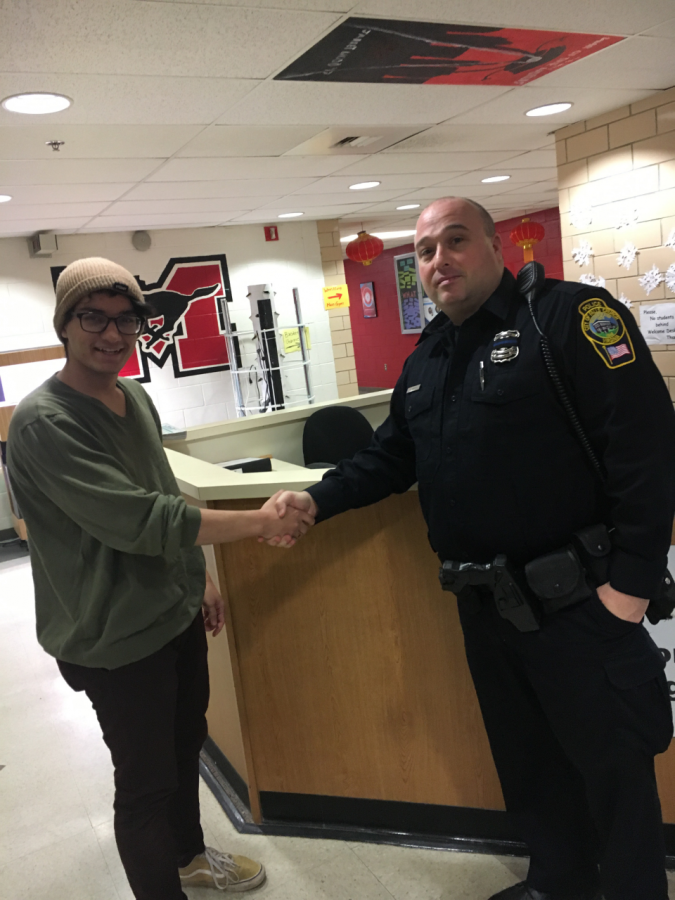Officer Clark Gagnon shakes hands with smiling senior student George Price at the front entrance of George Mason High School. Here at Mason, we are also participating in this program, and we almost always have at least one Officer on our campus.
So what is the School Resource Officer Program anyway?
After the Columbine School Shooting, April 20, 1999, schools around the country have been increasing security and other preventative measures to ensure the safety of their students. One major step taken for school security is the implementation of the School Resource Officer program (SRO).
This tactic of a police presence at schools originated in Flint Michigan around 1950 and has since spread into a national program with roughly 63% of middle schools and 64% of high schools being regularly patrolled by officers or having a full-time SRO.
The responsibilities of an SRO as a fully trained and sworn police officer, are to enforce our laws. For example one of his/her biggest jobs is to mediate conflicts, which often involves resolving physical fights between students. In addition, they teach about crime prevention and attempt to bridge the gap between communities and law enforcement.
“Yes I am a cop, but it is not that black and white. I am a person, I’m in the halls, it’s about communication, communication is key.” said School Resource Officer Clark Gagnon.
Here at Mason, Gagnon reaches out to students in a variety of ways. While he does create and guide presentations, the most important form of communication between him and students are the casual ones. In an interview with the GM Lasso team, Officer Gagnon elaborated on the claim above by describing how little things like “happy birthdays” are what make a difference in the community.
According to a poll by Debate.org, (as of January 15, 2019) 67% of participants supported the SRO program. Their opinions support the argument that cops in schools provide safer learning environments. The SRO program, while supported by a strong majority of these participants, does face opposition.
“As police officers become ever more ingrained in the fabric of education,” said David Tomar in a piece for The Quad. “The line between disciplinary and criminal matters has grown increasingly blurry.”
According to The Quad, as police presence increases in schools, confrontations between police and unarmed students has also increased. Due in part to their youth many students do not necessarily know the “ways” of law enforcement, so to speak, sparking full-blown confrontations over sometimes very minor offenses.
“No I do not believe in a school to prison pipeline, the Virginia juvenile court system allows kids to make mistakes and rarely calls for jail time. We want them to learn these lessons before they become adults,” said Officer Gagnon
This is often furthered by the variety of differences between school discipline and criminal investigation and repercussions. For example, it is not uncommon for students to fight in high school. These fights used to be handled by punishing both sides with a suspension or at worst an expulsion, however when officers get involved they must take it to another level entirely often in the form of long interrogations. One example, reported by media outlet, The Quad, details an officer who interrogated a third grader for over an hour at William P. Tatem Elementary School on June 16, roughly ten minutes away from Philadelphia. The third grader brought in brownies for the class, one of the classmates misconstrued this as racist, and the officer was called as a result of the ensuing squabble.
Despite the small amount of controversy over the presence of police officers in schools, the goals of the SRO program is creating safe and secure schools. While many argue that the presence of an officer on campus does improve safety, others argue it negatively impacts students. But one thing all of us can recognize is that school safety needs to be a priority.
